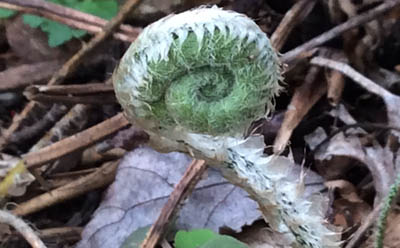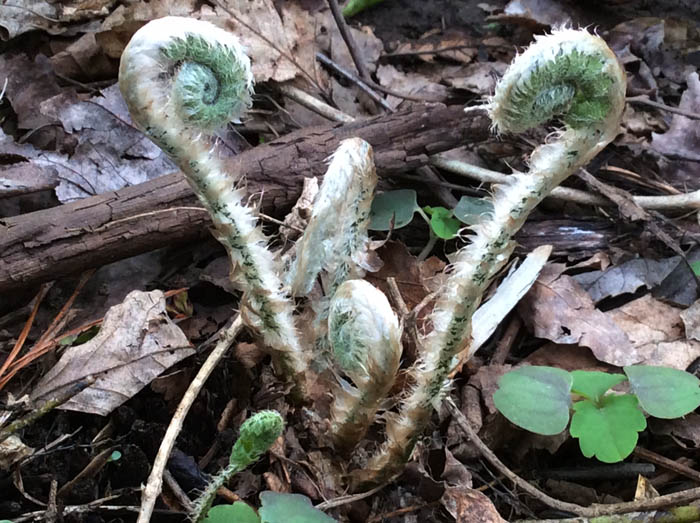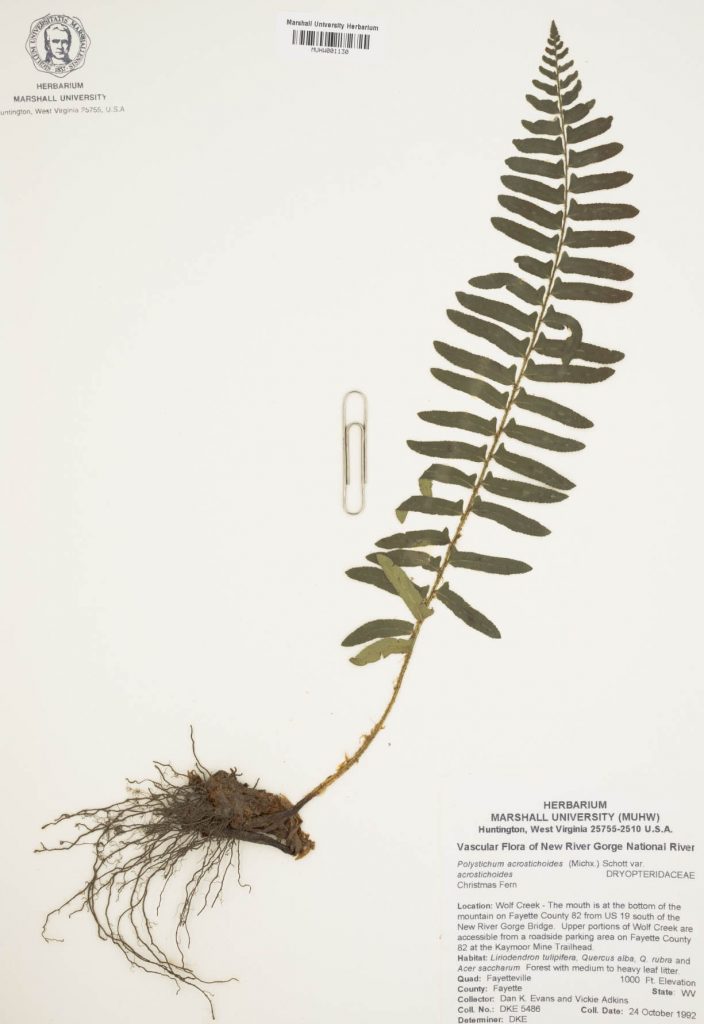
04.02.20 Christmas Croziers

Look what I found while poking around in a patch of skunk cabbage looking for their blossoms (apparently I was too late, I have learned that those funny-looking skunk cabbage flowers appear quite early, well before the stunning and unmistakable lush green foliage). The beautiful tableau pictured is created by the emerging fiddle heads of Christmas Fern, Polystichum acrostichoides. Christmas ferns are one of the more common ferns in our woods, it creates clumps of several plants one or two feet high across the forest floor. It is a deep green even in winter, which earns it its name Christmas fern. During the fall a portion of each year’s growth dies back while the remaining leaves flatten against the ground. (These flattened leaves contribute to creating cozy winter microclimates by preventing forest duff from blowing away.) In the spring new leaves appear which will shoot up and remain erect after unfurling their delicate fronds. One of the reasons for their prevalence in our area is the fact that deer find them distasteful, they leave Christmas ferns alone while devouring most everything else in their browsing. Birds benefit from the surviving ferns which provide shelter. Turkeys in particular find the thick clumps good nesting places. Apparently American toads also benefit from the areas of damp soil created under the clumps. Ferns, of course, are a very ancient plant, relying on reproduction through spores rather than seeds. Fern expert Robbin C. Moran writing in A Natural History of Ferns describes Christmas ferns “shooting” their spores an inch in the air like “popcorn popping”!
 Digitized image of a herbarium page from Marshall University in West Virginia.
Digitized image of a herbarium page from Marshall University in West Virginia.
 Josef Beery
Josef Beery Digitized image of a herbarium page from Marshall University in West Virginia.
Digitized image of a herbarium page from Marshall University in West Virginia.